Subtract numbers up to three digits
key notes :
Understanding Subtraction:
- Subtraction is the process of taking one number away from another.
- It involves a minuend (the number being subtracted from), a subtrahend (the number being subtracted), and a difference (the result).
Three-Digit Numbers:
- Three-digit numbers range from 100 to 999.
- Examples include 345, 678, and 912.
Basic Subtraction Terms:
- Minuend: The larger number from which another number is subtracted.
- Subtrahend: The number that is being subtracted.
- Difference: The result of the subtraction.
Steps for Subtracting Three-Digit Numbers:
- Align the Numbers: Write the numbers one below the other, ensuring the digits are in the correct columns (hundreds, tens, units).
- Start from the Units Column: Always begin subtraction from the rightmost column (units).
- Subtract Each Column: If the top digit is smaller than the bottom digit, you need to borrow from the next column to the left.
- Borrowing/Regrouping: If the digit in the minuend is smaller than the subtrahend, borrow 10 from the next column. Reduce the left column by one and add 10 to the current column.
Example Problems:
- Example 1: 457−123457 – 123457−123
- Subtract the units: 7−3=47 – 3 = 47−3=4
- Subtract the tens: 5−2=35 – 2 = 35−2=3
- Subtract the hundreds: 4−1=34 – 1 = 34−1=3
- Result: 334334334
Learn with an example
Subtract.
868 – 85 =
Subtract the ones. Subtract 8–5.

Subtract the tens. You need to carry over first. Subtract 16–8.
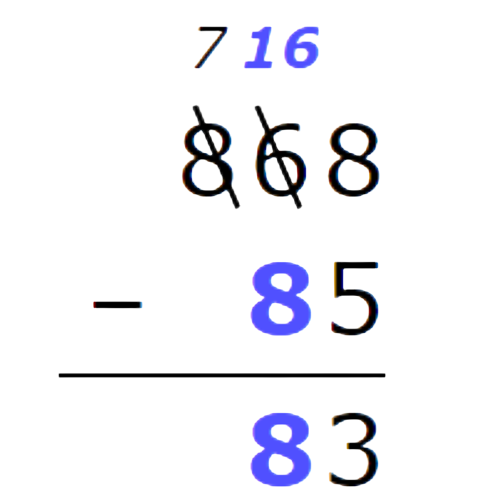
Subtract the hundreds. Subtract 7–0.

The difference is 783.
Subtract.
278 – 26 =
Subtract the ones. Subtract 8–6.
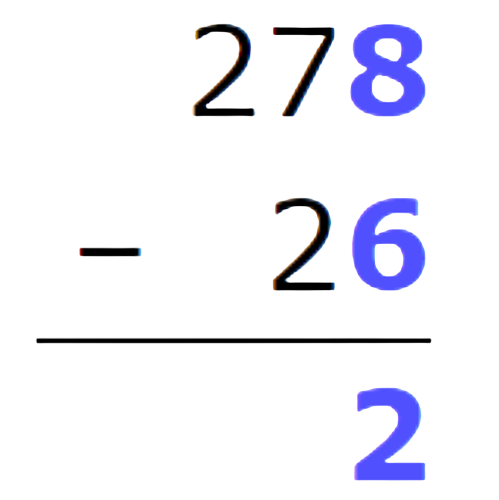
Subtract the tens. Subtract 7–2.
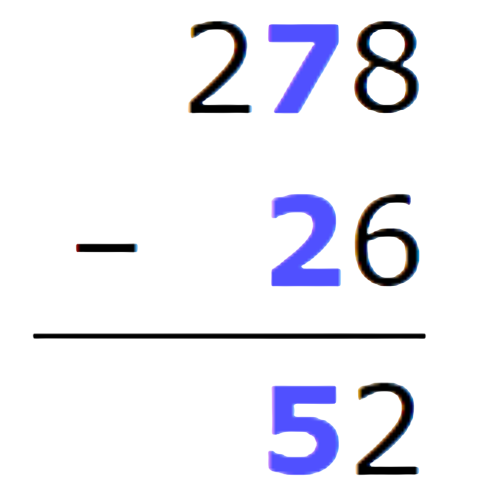
Subtract the hundreds. Subtract 2–0.
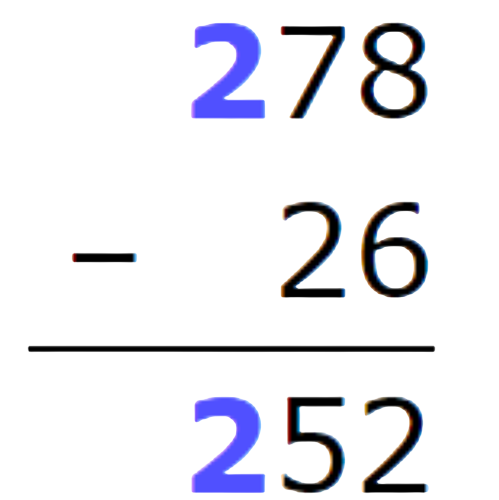
The difference is 252.
Subtract.
991 – 77 =
Subtract the ones. You need to carry over first. Subtract 11–7.
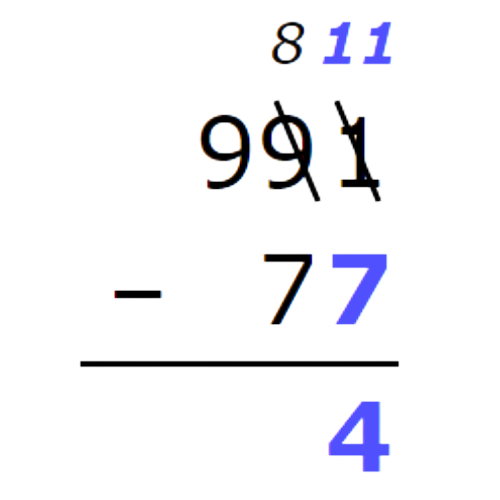
Subtract the tens. Subtract 8–7.
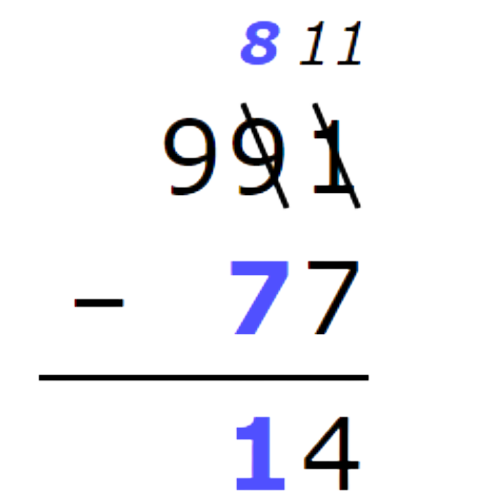
Subtract the hundreds. Subtract 9–0.
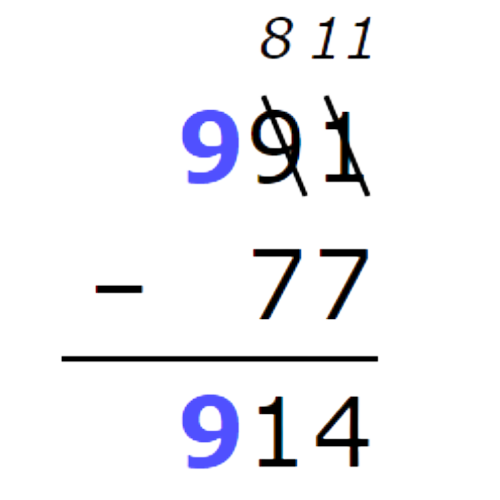
The difference is 914.
Let’s practice!

